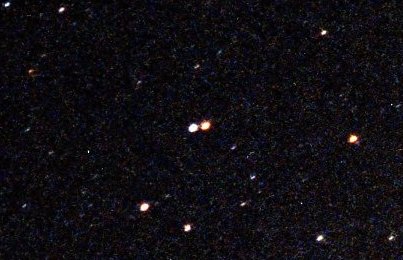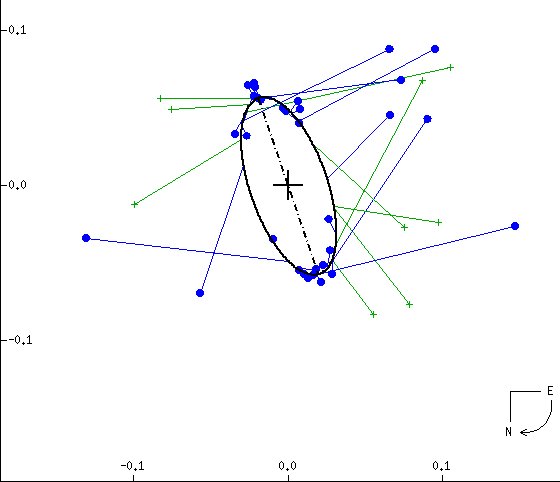
 |
Looking like a naked-eye double star, separated by just 10 minutes of arc, Nu Bootis (Nu-1 on the right, Nu-2 on the left) fools the observer. In reality, Nu-1 is more than twice as far away. By complete coincidence, the two are almost exactly the same brightness as viewed from Earth. Yet there the similarity ends, as Nu-1 is an orange class K giant, while Nu-2 is a white class A dwarf, the color contrast obvious. Oddly, Nu-2 is a REAL double, whose components (too close together to be seen here) are REAL twins. |
 |
The identical components of Nu-2 Bootis actually orbit each other about a point almost exactly between them every 8.48 years at a constant separation of 7.2 Astronomical Units. They are graphed here, however, as if one (set at the cross) is being orbited by the other. Given their similarity, it hardly matters which one orbits which. The orbit's apparent elliptical shape is the result of a 65-degree tilt to the plane of the sky. The scale is in seconds of arc. Given their angular separation of under a tenth of a second of arc, they are very difficult to see as individuals, as evidenced by the enormous scatter in the measuements. From the Sixth Catalog of Orbits of Visual Binary Stars , W. I. Hartkopf and B. D. Mason, US Naval Observatory Double Star Catalog, 2006. |